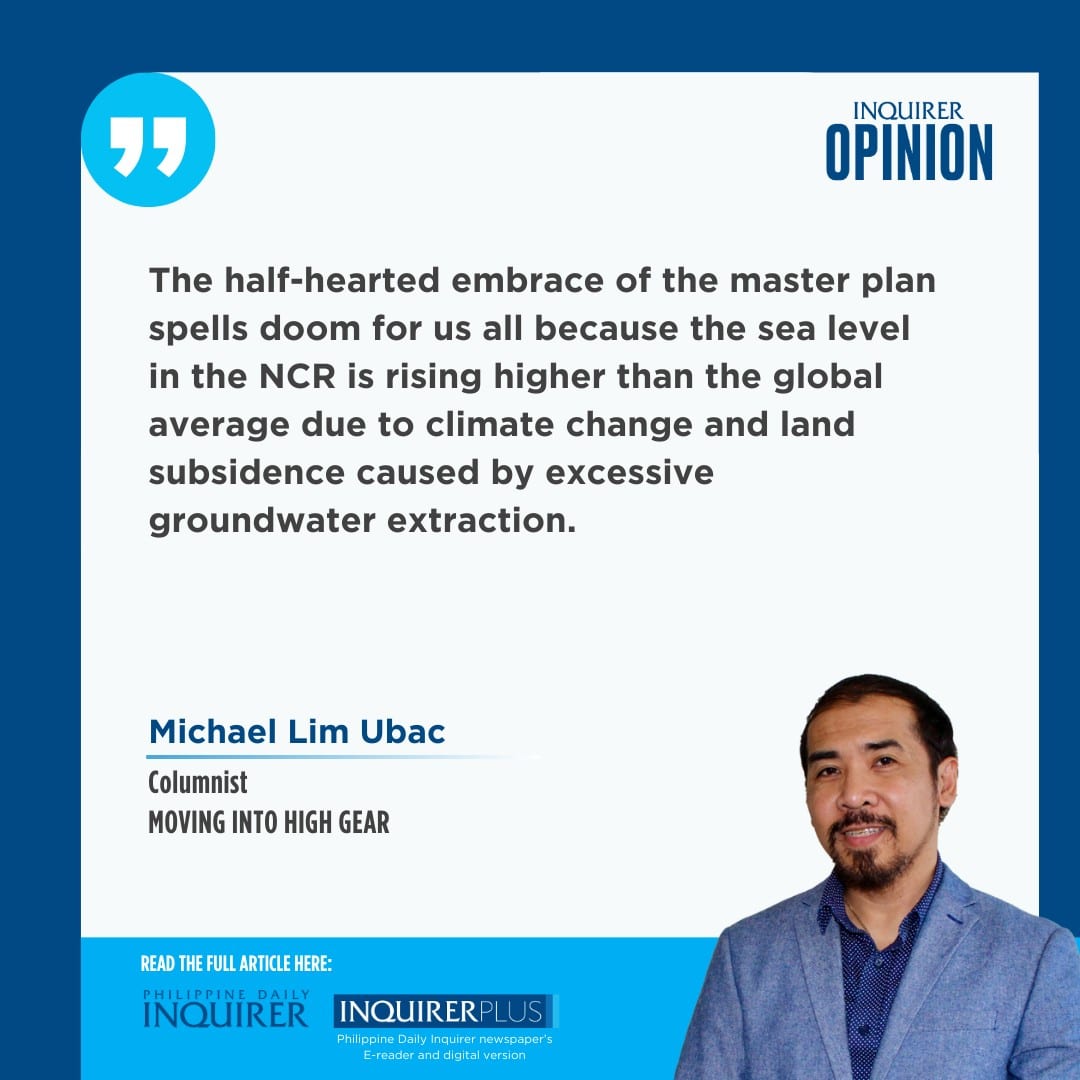If there’s any consolation for flood-weary people like us, the Metro Manila flood management master plan approved in 2012 with a price tag of P351 billion appears to be far from being mismanaged. At least not yet.
But we continue to lament the excruciating delays in pursuing the master plan, which could have helped reduce flooding in the metropolis and surrounding areas by easing peak river flows in the Pasig-Marikina River Basin.
Over a decade after the approval of the master plan, the successive administrations since the Aquino presidency have managed to implement a small part of it, which “aims to reduce vulnerability … and strengthen resilience against floods.” (You can access the project briefer on the master plan here: https://tinyurl.com/4vu54ret)
Despite the completion of 5,521 stand-alone flood infrastructure projects, the short and long of it is that the snail-paced bidding and construction of other flood-mitigation projects mirror the perennially low absorptive capacity of concerned government agencies when it comes to implementing large-scale projects.
With government commitment and World Bank and Asian Infrastructure Investment Bank (AIIB) backing, the master plan does not suffer from issues of lack of prioritization or funding gaps. But institutional inertia, leadership change (three administrations), and pandemic lockdowns all contributed to the delays.
Last May, the Department of Public Works and Highways (DPWH) said that a total of P104.2 billion worth of “flood mitigation/intervention projects consistent with the said master plan have already been programmed,” as reported by the government-run RTVM. It’s unfortunate that the amount is only 30 percent of the estimated cost of the long-term master plan, which will only be fully completed in 2035.
Phase 1. One component of the master plan, the Metro Manila Flood Management Project (Phase 1), is funded by the World Bank Group and AIIB and is being implemented by the Metropolitan Manila Development Authority (MMDA) in cooperation with the DPWH.
Phase 1 is still divided into four components, namely: modernization of drainage areas by DPWH through the construction of 20 new pumping stations and rehabilitation of 36 existing ones to “increase water retention capacity within the project drainage areas”; minimizing solid waste in waterways (by MMDA) within the communities near the project drainage areas; housing and resettlement of an estimated 11,500 affected people or 2,500 families living near waterways (by DPWH); and project management, support, and coordination (both by MMDA and DPWH).
Component 1 (drainage improvement) cost taxpayers the biggest burden, at P18.1 billion, while solid waste management and housing and resettlement cost P2.2 billion and P1.9 billion, respectively. Project management alone cost taxpayers P1.2 billion, which is the amount we paid to concerned officials of MMDA and DPWH for supervision, monitoring, development of communication strategies, and management of grievances.
But project implementation only began in 2017. The widespread flooding caused by the recent Supertyphoon “Carina” and Typhoon “Enteng,” which both enhanced the southwest monsoon (“habagat”), could not attest to any improvement in the flooding situation in the National Capital Region (NCR).
On the contrary, the flooding has worsened. This is not unexpected because pumping stations or river dredging/dike improvements have benefits only to their immediate localities because they are not connected to a central system. The game-changers in the master plan are still nowhere in sight—the proposed Marikina Dam, Parañaque Spillway, and Manggahan Control Gate Structure, which can block floodwaters from Sierra Madre from reaching Metro Manila by impounding them in Laguna Lake.
A simple search on Google Maps can tell us that these planned mega projects could prevent surface runoff from the Sierra Madre mountains in Rizal from quickly traveling downstream via the Marikina River (the mountains’ main drainage system). The Manggahan floodway in Pasig is where the runoff flows before ending up in Laguna Bay, which is a temporary reservoir. But when the bay and river swell, flooding occurs.
It doesn’t take a rocket scientist to figure out that without these measures, flooding is bound to occur in Montalban, Marikina, and Cainta during heavy downpours. Flooding is further compounded by high tide and the trash that blocks the pumping stations, river siltation, and the natural flow of waterways impeded by man-made structures—from informal settlements and high-rise condominiums that partially or fully cover the natural waterways.
The Pasig River and its smaller tributaries can become inundated with floodwater from the Marikina River, causing widespread flooding in Pasig, Mandaluyong, Makati, and Manila.
The half-hearted embrace of the master plan spells doom for us all because the sea level in the NCR is rising higher than the global average due to climate change and land subsidence caused by excessive groundwater extraction.
—————-
For comments: mubac@inquirer.com.ph
